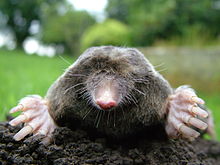
Moles are small mammals adapted to a subterranean lifestyle. They have cylindrical bodies, velvety fur, very small, inconspicuous eyes and ears, reduced hindlimbs, and short, powerful forelimbs with large paws adapted for digging.

The family Talpidae includes the moles who are small insectivorous mammals of the order Eulipotyphla. Talpids are all digging animals to various degrees: moles are completely subterranean animals; shrew moles and shrew-like moles somewhat less so; and desmans, while basically aquatic, excavate dry sleeping chambers; whilst the quite unique star-nosed mole is equally adept in the water and underground. Talpids are found across the Northern Hemisphere of Eurasia and North America, and range as far south as the montane regions of tropical Southeast Asia.

The subfamily Talpinae, sometimes called "Old World moles" or "Old World moles and relatives", is one of three subfamilies of the mole family Talpidae, the others being the Scalopinae, or New World moles, and the Uropsilinae, or shrew-like moles.

Desmans are diving insectivores of the tribe Desmanini in the mole family, Talpidae.

Talpa is a genus in the mole family Talpidae. Among the first taxa in science, Carolus Linnaeus used the Latin word for "mole", talpa, in his Regnum Animale to refer to the commonly known European form of mole. The group has since been expanded to include 13 extant species, found primarily in Europe and western Asia. The European mole, found throughout most of Europe, is a member of this genus, as are several species restricted to small ranges. One species, Père David's mole, is data deficient. These moles eat earthworms, insects, and other invertebrates found in the soil.

Soricomorpha is a formerly used taxon within the class of mammals. In the past it formed a significant group within the former order Insectivora. However, Insectivora was shown to be polyphyletic and various new orders were split off from it, including Afrosoricida, Macroscelidea, and Erinaceomorpha, with the four remaining extant and recent families of Soricomorpha shown here then being treated as a separate order. Insectivora was left empty and disbanded.

Euroscaptor is a genus of mammal in the family Talpidae. Members are found in China and South & Southeast Asia. It contains the following species as of October 2021:
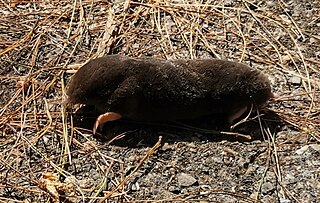
Kloss's mole is a species of mammal in the family Talpidae. It is found in Laos and Thailand. It was named after zoologist C. Boden Kloss.

The Himalayan mole or short-tailed mole is a species of mammal in the family Talpidae.
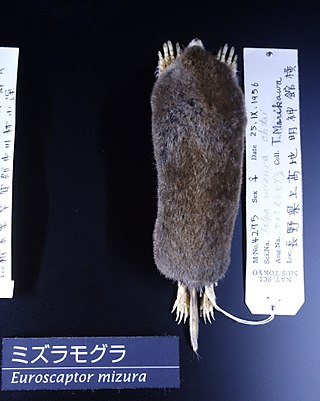
The Japanese mountain mole is a species of Old World mole in the family Talpidae. It is endemic to Japan. It is the only member of the monotypic genus Oreoscaptor. Its natural habitats are temperate forests and temperate grassland.
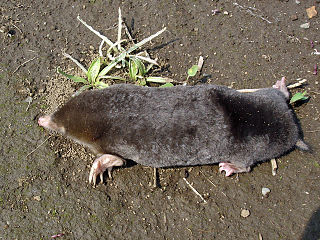
Mogera is a genus of mole in the tribe Talpini. They are native to East Asia.

The insular mole is a species of mammal in the family Talpidae. It is restricted to Hainan Island and Taiwan, where it is also known as the Formosan blind mole. The species was first described by Robert Swinhoe in 1863.

The Senkaku mole, also known as the Ryukyu mole, is a species of mammal in the family Talpidae. It was formerly classified as being the only species in the genus Nesoscaptor. It is endemic to the Uotsuri-jima of the disputed territory of Senkaku Islands, also known as the Diaoyutai Islands. It is most similar to the Insular mole of Taiwan and mainland China.
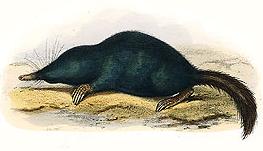
Urotrichini is a tribe of the mole family, and consists of Japanese and American shrew-moles. They belong to the Old World moles and relatives branch of the mole family (Talpidae). There are only two species, each of which represents its own genus. The name "shrew-moles" refers to their morphological resemblance to shrews, while generally being thought of as "true moles". The species are the Japanese shrew mole, True's shrew mole and American shrew mole.

The Aquitanian mole is a species of small burrowing mammal of the family Talpidae. It is found from the southwest of France to the north of Spain. Closely related to the European mole, this species was described in 2017, and it is difficult to distinguish it from it.

Ognev's mole is a species of mammal in the family Talpidae. It occurs in the southeastern coastal area of the Black Sea from northeastern Turkey to Georgia. It inhabits different habitats associated with moist soils in lowland areas. Little information is available about its life history.

The Talysch mole is a species of mammal in the family Talpidae. It is a small member of the family, which outwardly resembles the Levant mole, but is genetically closer to Père David's mole. It is common on the southwest coast of the Caspian Sea, from southern of Azerbaijan through most of the north of Iran. The habitat includes temperate rainforests and scrub areas. There is little information about the life history of the Talysch mole. It was described in 1945, but had long been considered a subspecies of various other Eurasian moles, and was only recognized as a distinct species in the mid-2010s. No surveys have been carried out to quantify the status of the species.

La Touche's mole is a species of mammal in the family Talpidae. It is found in eastern China and parts of northern Vietnam. It is named after Irish naturalist John David Digues La Touche.

The Ngoc Linh mole is a species of mammal in the family Talpidae. It is endemic to central Vietnam. It was named after Ngọc Linh mountain, which it was first discovered in the vicinity of.
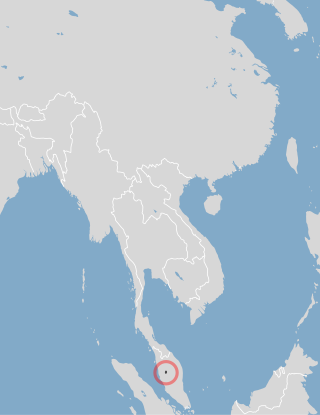
The Malaysian mole is a species of mammal in the family Talpidae. It is endemic to the highlands of peninsular Malaysia, making it the southernmost known species of mole.
